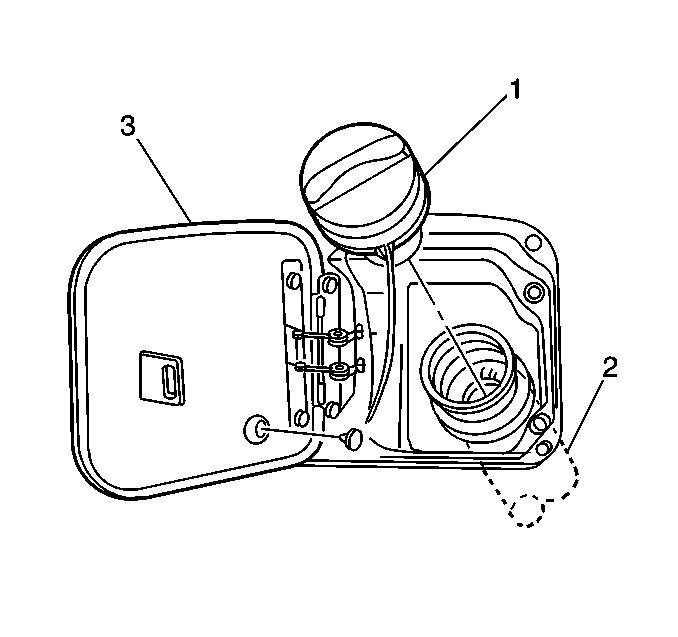The fuel tank filler pipe is equipped with a turn to vent screw on the type
cap which incorporates a ratchet action in order to prevent over-tightening.
The turn to vent feature allows the fuel tank pressure relief prior to removal.
Instructions for proper use are imprinted on the cap cover. A vacuum safety relief
valve is incorporated into this cap.
The fuel fill pipe has a tethered fuel filler cap. A torque-limiting device
prevents the cap from being over-tightened. To install the cap, turn the cap clockwise
until you hear audible clicks. This indicates that the cap is correctly torqued and
fully seated. A fuel filler cap that is not fully seated may cause a malfunction
in the emission system.


